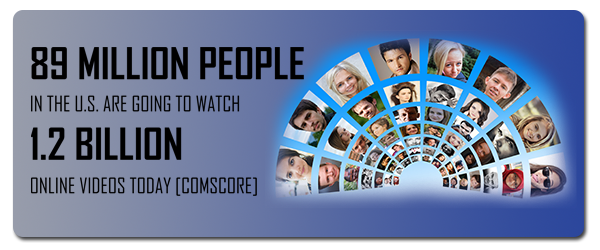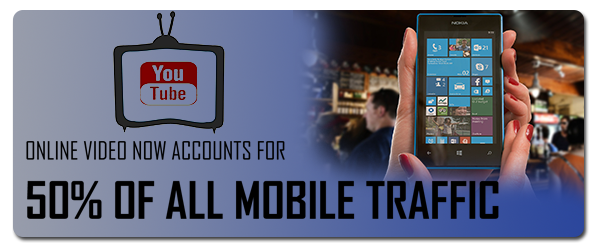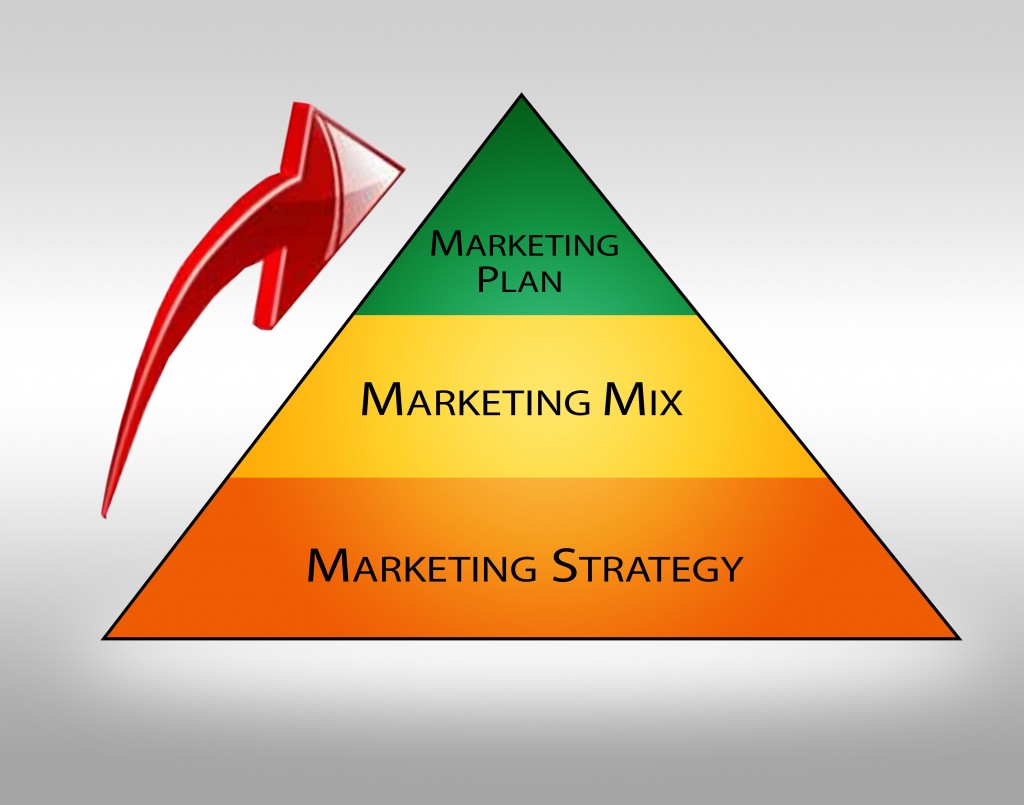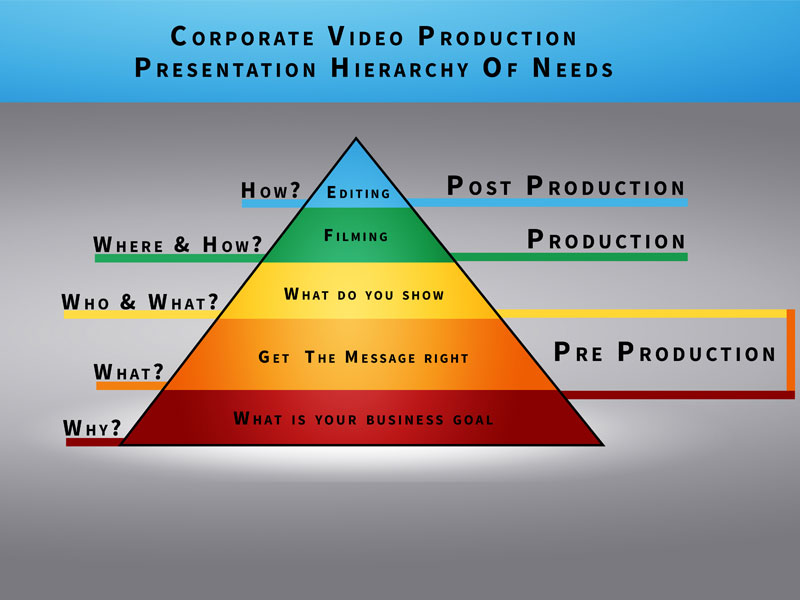
A Filmed presentation is now on every transmedia marketer’s to do list. Why? Because web video and rich media engages, persuades, and motivates like no other marketing tool. No matter if it is for broadcast or the web, you’re next successful filmed presentation needs to include these thought considerations:
- Tell a good story
Sure it sounds simple, even pedestrian, but good storytelling is the keystone of your branded content. Stories have a beginning, middle and an end. They make us think. They make us feel. If told well, they inspire us. At the heart of any good story is an emotional appeal – it may be subtle or it may be dramatic, but without that emotional connection, the story is quickly forgotten.
A good story has some or all of the following attributes:
Good stories don’t appeal to everyone
Your story must be targeted to an audience that you are most interested in communicating with. (These are also the people most likely to socialize your story).If you try to appeal to everyone, you end up appealing to no one.
Good stories resonate
They are familiar and strike a chord with the audience because they can relate to the story being told. In the development planning stage, test your story idea with selected members of your target audience before you start production.
Good stories are credible
The story teller, the content and the outcome of the story have to work together and all have to be believable and trusted – your audience can see through the hard sell and the exaggeration.
Good stories are usually simple
They can be a close up or a thirty thousand foot view of your concept but in the end the best stories have a simple outcome and a simple message. The goal is always to create engaging presentations that tell a good story.

2. “Show them, don’t tell them”
An engaging filmed presentation of someone using your product or service as they commend its intrinsic worth is far more powerful and credible when combined with animated text or a series of filmed examples. Educators and corporate trainers have long known the true benefit of video. It generates much higher retention rates because it engages more than one of the senses at the same time. Retention rates can triple when what you hear is being reinforced by what you see. But of course you will still have to present a compelling story that engages your audience.

The ability to show your viewers how your product works, how it solves their problems and how it is used by others is where transmedia marketing through stories is unsurpassed as a vehicle to engage and persuade your audience. While you may think it’s not about you or your product or service – it’s about how your product or service can help solve your customers’ problem. Show your viewer exactly how your product or service solves their problem. This is particularly important in the early stages of the purchasing cycle. Combining animation and motion graphics will build compelling visual examples of exactly how your products work and more importantly why they will solve your viewers’ problems.

• Testimonials are far more compelling when you see and hear an engaged user speak about their experience with your company’s service or product.

• Case studies are far more engaging when you can actually see how a user integrates your product in to their process and how your product measurably improves your viewer’s bottom line or quality of life.

• Product demonstrators are far more powerful when you illustrate with motion graphics exactly how your process works and why it benefits the viewer.
The power of Transmedia storytelling is in its ability to demonstrate the tangible benefits that the product or service can offer.
3. The written word drives everything
There are many important components that go into creating an effective presentation. Using the proper location, right presenters, motion graphics, and music are all critical components to the creation of engaging communications tools. None of these however, are more important than the script. A script or at least speaking points that summarize what is covered in the filmed presentation.
Some things to consider when developing a script or on-screen talking points outline:
• The key issues affecting your viewer.
• The top three messages that you have to communicate.
• Are you clearly outlining the benefits that will best resonate with your target audience?
•Are you speaking your customer’s language?
The script is the ‘what’ in the pre-production process. Everything else is the ‘how’. Far too many filmed presentations simply focus on the ‘how’. It is critical that the written words are created by someone who has the expertise in marketing, writing and positioning. Style won’t count for much if your message doesn’t resonate with your audience. Deciding on the right thing to say is the first step in how that information is ultimately presented.
Unscripted doesn’t mean unstructured
Spontaneous, unscripted presentations are becoming more commonplace on the internet as this type of presentation provides a natural tone and authenticity that resonates well with viewers. There is a lot of effort and planning that goes into what questions are asked, how people respond on-camera, and how the final product is edited. Even if a formal script is ultimately not developed, the business objective, structure and desired outcome of the filmed presentation is an important consideration and coordinates the pre‐ and post‐production stages. Always start your project knowing what you want the video to communicate.
Build‐in Interaction (and ultimately, conversion)
The more visual interaction you can build into the experience, the more engaged the viewer is with your brand. Interest, engagement, and interaction should be the goals of web-based filmed presentations. “Click here to…” is a good start. What do you want the viewer to do when they have finished watching your web video? How deep do you want to take your viewer in an interactive presentation?

Here is a short list of options to include when building your online presentations:
•Click here to find out more about this service
• Click here to read a white paper on this topic
• Click here to watch a related presentation
• Fill out a quick survey to discover if you are qualified for this promotion
• Take a quick poll to see how you stack up in the market
• Click here to have a technical expert answer your questions
• Please help us improve our communications by rating this presentation
• Sign up now for our weekly industry update
Conversion is the goal. Whatever your conversion mechanism is; you want your viewers, customers and prospects to take the next step.

Chose the right format, structure and style of video
Abraham Maslow’s quote, “If the only tool you have is a hammer – every problem looks like a nail” applies well to transmedia marketing. The number of web marketing service providers is growing. Many of these web optimizing organizations specialize in one specific format. Business animation and information graphics or PR firms proclaim that presentations that limit time (2 minutes, 3 minutes, 4 minutes, etc.) are “the right one for the web” or that “their platform is the only way to be truly effective”. None of them are necessarily right…or necessarily wrong. Every business problem is unique and there is a multitude of rich media tools and methods to solve your important communication problems. It is not the formula of time, but the story that drives your communication – it will be as long or short as it needs to be. Consider alternative transmedia approaches and formats before committing.


6. Consider the only perspective that matters: Your Viewer’s
It’s not just about you or your product. The internet is a leveler in which you are not just competing in your traditional marketplace but with others just like you across the world. Lackluster presentations or just good enough presentations posted to your website won’t reach your viewer or your goals. They are interested in the comfort, status, utility or pleasure that your product or service conveys. These are the things that you need to be promoting and if the quality of the filmed presentation does not meet the quality of your product and service there is a significant disconnect. Like any purpose-built marketing material, your web video needs be developed with a single goal in mind:
How do I communicate my company’s understanding of, and solutions to, my customers’ problems and does the quality of the filmed presentation meet or exceed the high standards of my products and services that the company offers?
7. Define business objectives (and outcomes) first
As the use of web‐based video grows in popularity, it’s important to remember that video marketing is a means to end, not an end in itself. There are far too many marketing articles that discuss how to get video up on your website without ever mentioning the most important question, why.
A well-produced superior video is one of the most persuasive marketing tools available and building interactive transmedia presentations is a great way to engage your audience across multiple platforms. Yet putting an unprepared, uncomfortable key executive in front of a camera, re-purposing old presentations or having staff from the organization put together a ‘viral’ video won’t bear fruit. Worse yet, bad video is even harder to ignore than bad print material. Video is engaging and, more importantly, video is persuasive, but if it does not define your business objective it can be just the reverse. Business goals and objectives are part of the planning process. They are describing what a company expects to accomplish throughout the year. These goals and objectives might pertain to the company as a whole, departments, employees, customers and marketing efforts. Most companies use specific marketing measurements to keep track of their goals and objectives. When you are preparing to commence on creating a filmed presentation ask yourself the following question, “What are my business objectives for my transmedia marketing program?” The reason we do this is simple: the “how” becomes much easier to figure out when you first know the “why

Consider the following when planning to implement video on your website
• At what stage of the buying cycle are you targeting your prospects? For example, product presentations (that highlight benefits – the customer’s perspective) are more appropriate during the consideration phase. Product demos (that highlight features – your perspective) are more helpful during the comparison phase.
• Who is your audience? If your answer is “…well, everyone really” you’re probably wasting your investment in marketing. The vast majority of YouTube viewers are not your audience. There is a considerable difference between ‘views’ and ‘targeted views.’ Creating one broadly focused web video might add value but you should also consider breaking your web video into discreet pieces that speak to specific audiences. Successful transmedia marketing always starts with targeting.
• What are the measurable business outcomes? How do you measure success? You need be able to quantify the business value by measuring ‘click‐thru’ registrations; time spent watching the presentation, or some other objective business metric.
Your final step in developing transmedia marketing and your filmed communication strategy that drives significant business results is to make sure you fully understand your market by doing some research: market size and growth, competitors, complementary partners, and customers.
The marketing strategy: the high-level rules that will govern what marketing efforts you focus on will help you devise your communication strategy which is in alliance with your business goals, assisting in your overall marketing plan. For example, if there’s a single influencer who touches all your customers and has a significant impact on the way those customers try to solve their problem… one of your filmed communication strategies may be to focus on building a strong relationship with that part of the marketplace.

These are the elementary questions that you can think about in relationship to your goals in the following blanks:
This video will help ___ {this audience} ____ understand that our product or service solves ___ {this problem} ___ and provides ____ {these benefits) ____. We will measure the success of this video by ___ {this rating mechanism}. Will this video meet or exceed the quality standard that is part of the branded message and are we willing to make this investment for___ {this audience marketing strategy}
If you can’t clearly and succinctly fill in the blanks your video will fail to achieve any measurable results.
The creation of your filmed presentation for your video needs to follow a structured development process.
As Covey once stated, “begin with the end in mind”. The most important part of the filmed video production process is pre-production. Chances are that if you are either surprised or disappointed by the results of your video it is because the planning process was flawed.
Final thoughts as you commence
The creation of your filmed presentation needs to follow a structured development process. When it doesn’t, your chance of success is low. Here are common mistakes made by companies developing transmedia marketing videos that have led to failure:
- Poorly defined objectives.
- No clear message(s).
- The filmed presentation is all about you and does not solve the viewer’s problem.
- Your video doesn’t resonate with your audience.
- Loose, or no marketing processes at all to develop and promote the video.
- You started with the creative and not with the message.
- Your video doesn’t support your brand messages.
- The marketing budget isn’t large enough.
- The video has no call to action, if you do not know, neither will the viewer.
- No distribution, SEO or promotion plan.
Production (filming) and post-production (editing) represents about 1/3 of the total value in the overall video development process. Planning (building the right messages for your audience) and promotion (making sure the video is seen) are both equally important.
Let us assume the filmed presentation for your video turned out great, if no one sees it, you’ve wasted your money. Are you optimizing a webpage with keywords to help promote the video? Are you promoting the video on industry portals or other related sites where your intended audience might be? Have you developed an email campaign to promote the video to key audiences? Do you have a process to move prospective viewers through your sales cycle once they have viewed the video? Do you have any budget for changes or do you assume that you’ll get it exactly right the first time through? Do you have a transmedia social media campaign, a PR campaign, a media campaign, or some other promotional activity to build interest and awareness for the filmed presentation?
Flash back to 1998, when every company had to have a ‘web presence’ but were not sure exactly why. Businesses today are using video everywhere to communicate to their customers and prospects. But just like websites over a decade ago, most of the videos produced today do not move their audiences. But a video with the right content element and the right budget becomes an incredible business tool to communicate your important messages to your audience and it will reap a return on your investment many times over.
Epilogue
Picasso’s “Dove of Peace” Napkin Art
The story goes that Picasso was sitting in a Paris café when an admirer approached and asked if he would do a quick sketch on a paper napkin. Picasso politely agreed, swiftly executed the work, and handed back the napkin — but not before asking for a rather significant amount of money. The admirer was shocked: “How can you ask for so much? It took you a minute to draw this!”
“No”, Picasso replied, “It took me 40 years!”
Quality is what Quality does
This could well be my favorite story concerning business and transmedia marketing. Experience is so often over looked when it comes to looking at numbers and budgets. Quality is why and how you want the job done…Experience then is simply why you have that quality… X of $ = Y end product….
The end always represents success!
Now that you know the ‘why’, click here, to begin on the road to transmedia marketing success.
transmedia@comtechcorporation.com
Recent Comments